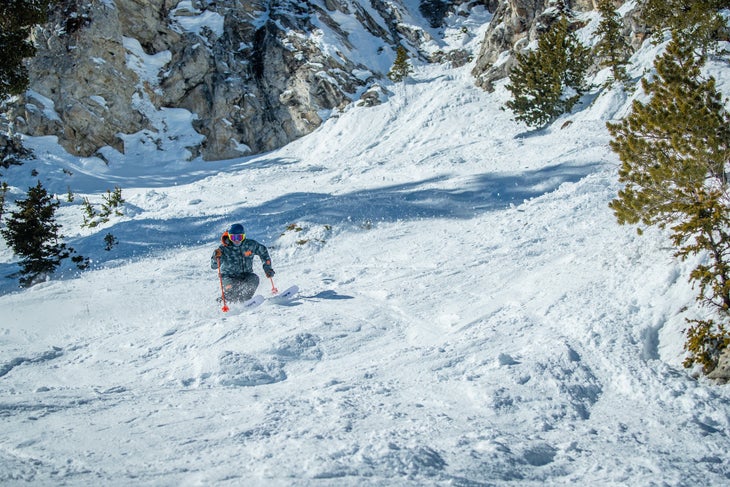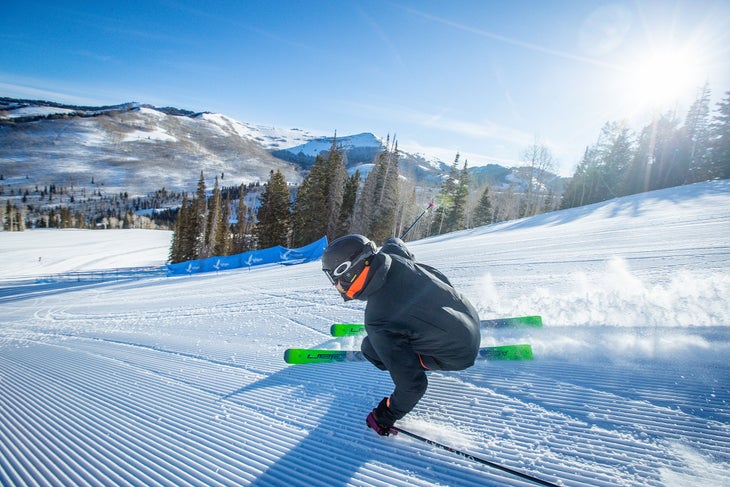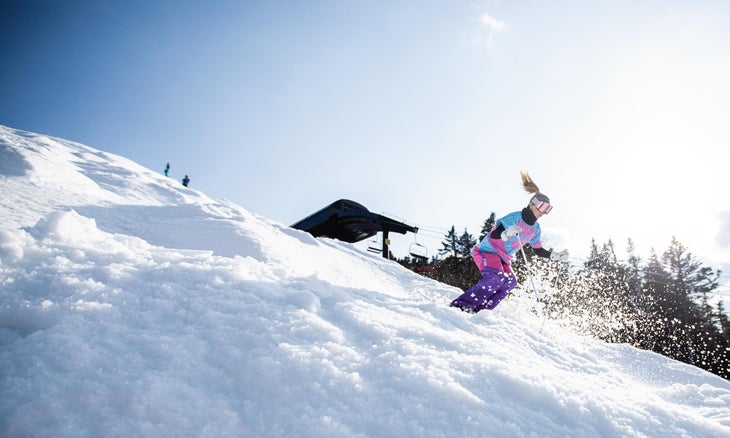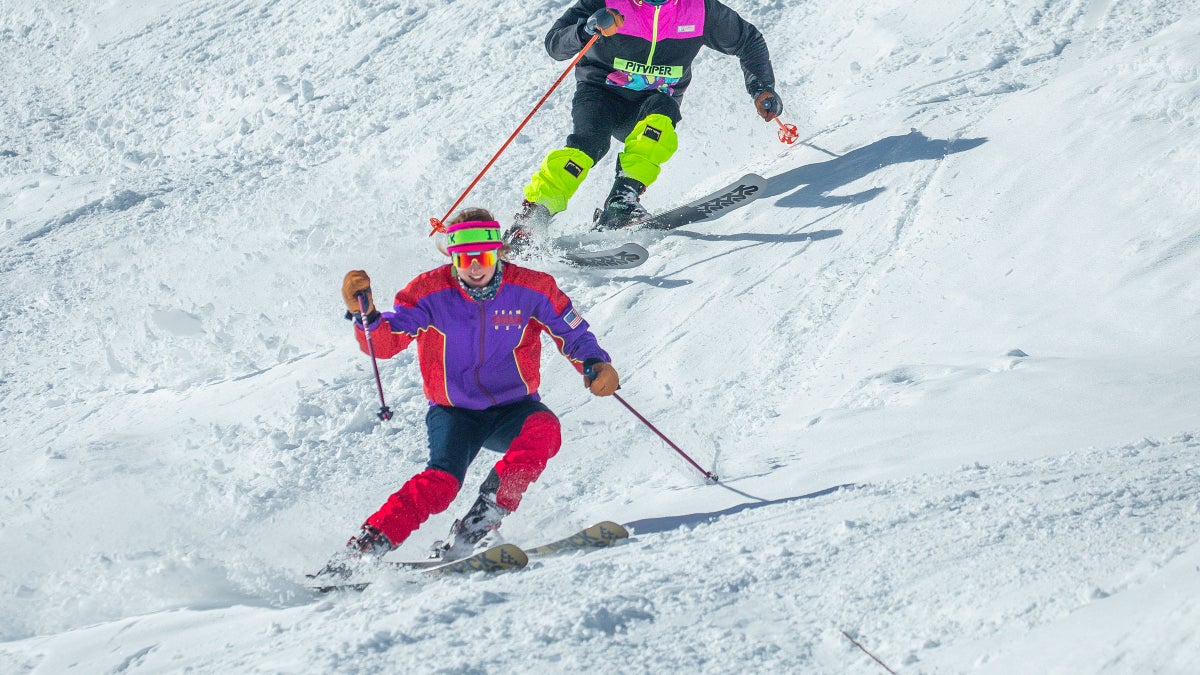Products You May Like
To those who have already hung up their skis for the season now that winter is officially over—you’re missing the good stuff. Late March and April are great times to hit the resort and enjoy soft turns in spring corn, short lift lines, and end-of-season closing festivities.
That said, hitting the sweet spot with springtime conditions can be a challenge when the snowpack enters a melt-freeze cycle. Too early in the day, and those slushy bumps are glazed over and filled with death cookies. Too late, and you might as well be skiing through real mashed potatoes. When it comes to spring skiing, timing is everything.
Luke Toritto, a fully-certified PSIA ski instructor at Jackson Hole Mountain Resort, is well acquainted with the mixed bag of snow conditions that spring skiing can hold. “But when you can time it right and ski soft groomers in the morning and slushy, playful bumps in the afternoon, that’s the best,” he says.
Working as a ski instructor for over a decade, Toritto has fine-tuned his strategy for optimizing soft, forgiving turns in the spring. Here, he shares his tips for how to make the most out of the end of the season.
Come in with a different mindset
While winter resort days are usually about sniffing out the best powder stashes on the hill, springtime is a good time to be more strategic. According to Toritto, step one of spring resort skiing is changing your mindset. “Midwinter, you can sometimes come to the resort and bank on getting good skiing the whole day in cold snow. But in the spring you have to look for a window here and a window there,” he says. “Spring skiing is less about charging hard all day and more about having fun and celebrating the season.” For Toritto, spring turns are like a bonus, icing on the cake to a successful season. It’s a time to relax, enjoy a sunny lunch on the deck, and wrap up the day with live music.
Know your aspects

Slope aspect is everything with spring skiing, and getting familiar with the aspects of some of your favorite runs will help you time them. In the northern hemisphere, north-facing slopes are the most shaded, often holding dry, cold snow when the rest of the solar aspects are heating up. South and east aspects get the most sun, and will be most susceptible to big temperature fluctuations. Toritto says in the spring he’ll often stick to north-facing aspects earlier in the day, until the sun softens the south and east aspects. Midday, south and east slopes can ski really well, until they’ve gotten too blasted by the sun by late afternoon.
Related: How to use an avalanche report to plan your backcountry ski day
Work your way up the mountain
Elevation can play another key role in choosing terrain. At most resorts, where temperatures are higher at the base and colder up high, starting low and working up higher throughout the day as it warms can be a good strategy. When the corn gets slushy and grabby down low, head to the upper mountain for cooler temps. It’s worth checking your local resort for temperatures at different elevation bands (often the resort website will list a base and summit temperature) to check if that’s the case. Resorts like Jackson Hole often have temperature inversions, so some days it pays to start up high where it’s warmer.
Check the grooming report

Many resorts put out a daily grooming report, a trick that Toritto uses to determine where to start his day in the morning. “It’s worth checking what got groomed overnight and what was groomed in the morning,” he says. “Anything groomed in the morning tends to be softer and smoother than the snow that was groomed overnight, which can set up to be weird and chunky.”
Quit early
Yeah, you read that right. When temps are rising into the 40s throughout the day, don’t get lured into skiing until last chair. Grabby and sloppy conditions at the end of the day can be challenging, but also dangerous. Toritto says he’ll often call it at 2 p.m. if it’s getting too warm. “A lot of injuries happen late in the day in sloppy, heavy snow. Keeping an eye on the snow and how your body feels can keep you from getting hurt,” he says. “That might be the best time to enjoy some beers in the sun and catch live music at the base.”
Related: How to avoid face planting or tearing an ACL in spring slush
Ski the East

Again, you read that right. While it’s hard to compare the midwinter skiing in the Rockies to anything out east, Toritto firmly believes the East Coast corn skiing rivals the West. Toritto has noticed that man-made snow, which is prevalent at Eastern resorts, corns up more easily and he’s found East Coast corn snow to be more smooth and consistent compared to the West’s more complex snow conditions. “Don’t underestimate the East Coast, especially in the spring,” Toritto concludes.
